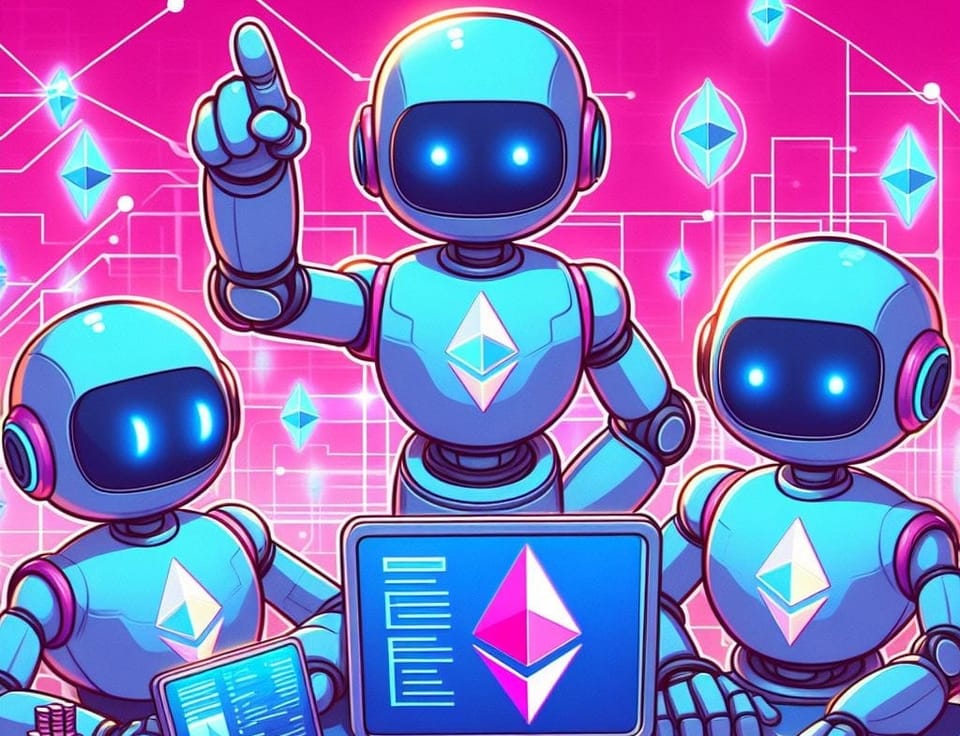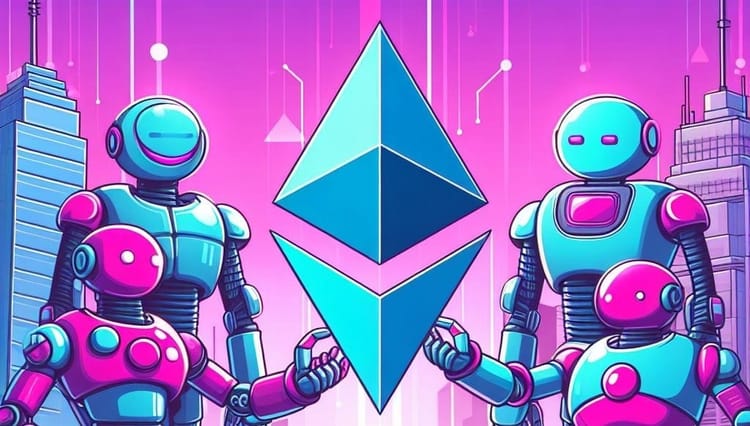Web3 + AI at ETHDenver | Part 1

Hello, everyone, and warm welcome to all newly joined subscribers!
The 2024 edition of ETHDenver just concluded and, unsurprisingly, the synergy of Web3 and AI became the focal point in it. As expected, the world's largest crypto event hosted the crème de la crème of experts and builders and offered a rich program of talks, panels, and hackathons. Fortunately for all of us who couldn't be there in person, most of those were recorded, and I collected the best for you to watch!
Thank you for being here! Let's dive in!
Decentralized AGI Summit
The Decentralized AGI Summit represented one of the most multifaceted examinations of the Web3 + AI convergence EthDenver had to offer. It spread across 6+ hours of panels and talks, and featured a variety of speakers. It welcomed a plethora of protocols including NEAR, EigenLayer, Polygon, Filecoin, Worldcoin, ORA, 0G Labs, Valory, MyShell, Modulus Labs, EdgeAI, Ritual, Allora, Symbolic Capital, Gensyn, Fraction AI, Vanna Labs, Compass Labs.
Check it out below to hear NEAR's Illia Polosukhin showcasing the current state of the Web3 AI tech stack and Valory's David Minarsch distinguishing between the different types of on-chain agents. You will also learn how to make your AI model or training data private, but verifiable, and what are the advantages and shortcomings of methods like ZKML, opML, and FHE (fully homomorphic encryption).
Decentralizing AI, Our Next Great Challenge
This panel discussion featured crypto veterans Illia Polosukhin and Erik Voorhees for a conversation on the importance of decentralizing intelligence and making it permissionless.
The two speakers started by highlighting today's alarming state of affairs, where it is not clear who gets to decide what is the source of truth. Right now, both the data put into the most prominent LLMs like GPT, and the biases programmed into them are completely opaque. Soon, a model will be able to take a user's email address as a reference to their preferences and use them to target bias. There could even be disguised advertisements within a model output without the user even suspecting it.
That is why both Polosukhin and Voorhees were of the opinion that people should care about privacy. They stated that users' personal data should remain on their devices, and not under some third party's control, people should run inference on their own machines, and use open-source AI models whenever possible. To that end, open-sourcing a model should be properly incentivized. Luckily, the Web3 space has the tools to remedy most of these challenges and is already making significant progress.
Voorhees also touched upon the US regulations of AI and called them unconstitutional. He also declared something obvious to everyone: these kinds of measures are not stopping anyone from employing AI for malicious goals.
Why Does AI Need Crypto?
Gensyn's co-founder Ben Fielding presented another interesting view on why the AI and crypto spaces need to work together. Having background in ML research, Fielding quickly realized that it was the lack of capital and computational resources, and not the lack of knowledge, that was holding human progress back. He had been witnessing the brewing compute crisis for several years, which ultimately motivated him to launch Gensyn.
The computation DePIN Gensyn is creating a new infrastructure enabling the supply part, i.e., the hardware owners, and the demand side, meaning the ML researchers and operators, to interact and benefit from each other. Moreover, Gensyn is securing the way ML will be developing in the future.
Fielding expects for models to become the creators of other models, but to that end, all human aspects in the chain of ML operations should be replaced with technology and automated. One core aspect is verification, which currently is a bottleneck.
Stay tuned for Part II of this article, where I will share other DePIN-related talks.
AI x Crypto The 30k Foot View
Niraj Pant from Ritual, a project I covered in last week's newsletter, shared why he works in the AI x Crypto space and what excites him about it.
Pant also initiated his talk with stating the problem: today's AI infrastructure is highly centralized and permissioned, with no privacy and loads of geographical limitations, and regulations which make it harder for new actors to enter the market. Fortunately, Web3 + AI comes to the rescue with great tools for self-sovereignty, coordination, and incentives design.
Pant went on to illustrate Ritual's mission to make AI highly accessible through the creation of a whole new class of AI-enabled dApps. Ritual's strategy consists in:
- Phase 1: Infranet, an already active off-chain compute network that any blockchain can tap into and call inference, fine-tuning, or quantization of AI models directly in their applications.
- Phase 2: Ritual Chain, a sovereign and EVM-compatible chain, with custom coprocessor, purpose-built for AI native crypto dApps and crypto-enabled AI, where AI models will be first-class citizens.
Pant also underlined DeFi, gaming and entertainment, and governance as just a few of the sectors that will be disrupted by AI-enabled dApps.
AI Isn't Evil and Smart Contract Proves It
Suede Kam came to the stage to introduce Ora's vision of supercharging AI's verifiability through blockchain and crypto incentives for continuous contributions from the community. He described AI's verifiability as a spectrum, where mechanisms like opML, ZKML, and Ora's opp/ai offer different types of utility and levels of safety.
Kam also presented Ora's EIP (Ethereum Improvement Proposal) for a new token standard (ERC-7641) for an intrinsic revenue share token. It defends the thesis that AI contributors and builders should be properly rewarded for their work. The new standard will make it possible for the revenue generated from smart contracts paying for Ora's On-chain AI Oracle, OAO, to be divided among all token holders.
Disclaimer: None of this should or could be considered financial advice. You should not take my words for granted, rather, do your own research (DYOR) and share your thoughts to create a fruitful discussion.




Member discussion